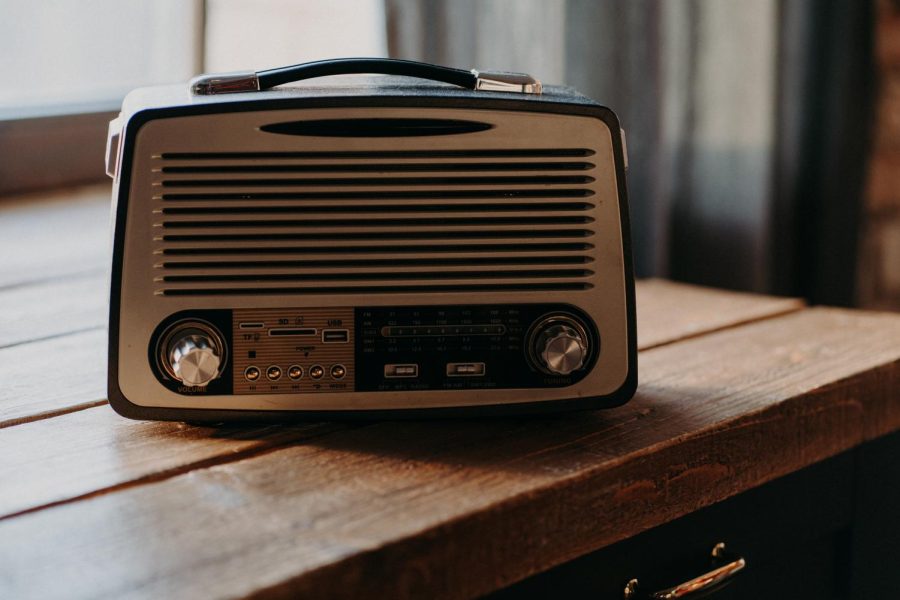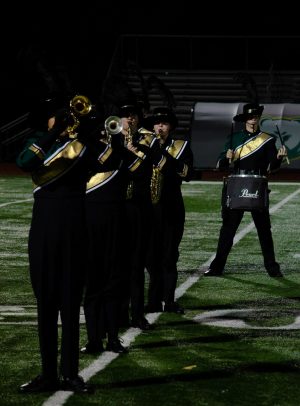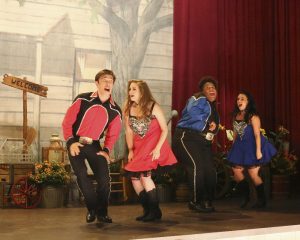RBHS teachers share music of their youth
March 7, 2022
Turning on the radio in the present day, the ears of Americans are greeted with hip hop and pop, whose roots could be found in the beginning of softrock in the 1970s. Prior to the pop genre popular today, there were a multitude of other genres, most of which can be traced back to jazz and blues, according to an article from the Public Broadcasting Service. Since that time, several categories of music have made their way in and out of the spotlight, such as rock and folk, many of which were once listened to by various teachers in the RBHS community.
RBHS technical theater teacher Dee Crosby said he did not listen to much of the popular music when he was in high school, but did have some specific preferences.
“The genre that has always maybe been a go to is kind of folk music,” Crosby said. “So this is going back to when I was closer to your age, which is many decades ago, but John Denver, James Taylor, Carly Simon [and] Jim Croce. Gordon Lightfoot, he was my favorite.”
While Crosby said he didn’t listen to the once popular Detroit Rhythm and Blues genre from the 1940s and ‘50s, the more folky sound of his favorite artists did reflect a somewhat common sentiment of the time, as James Taylor, John Denver and Jim Croce all produced hits like “Fire and Rain,” “Time in a Bottle” and “Take Me Home, Country Roads” which had large groups of fans and enthusiasts.
RBHS art teacher Carrie Schauwecker said she enjoys popular music, especially hip- hop and pop from the 2000s, as that’s what she grew up listening to.
“I think it’s really cool with the crossover artists who are doing collaborations with other people who are in different genres,” Schauwecker said. “They each kind of give you a different kind of vibe.”
Other teachers favor different kinds of music, despite their originating from genres like folk. For example, RBHS math teacher Samantha Kiesewetter said she likes country music the best.
“I like a variety of things, but country is my favorite,” Kiesewetter said. “I also like the stories behind the good songs. Not the super cheesy poppy country.”
According to a study carried out by Statista.com, nearly 49.9% of people in the U.S. listen to country music and 56.1% of people listen to pop, followed by 38.9% of people who listen to hip hop. These statistics reflect a commonality in modern listeners as most listen to at least one of the aforementioned genres. Despite this, however, Crosby enjoys listening to gospel music, putting him in a less than 10% of people who actively listen to the gospel genre.
“Music has been calming for much of my life,” Crosby said. “A lot of the music that has been influential has been gospel old church hymns, which have delightful words that really do calm the soul.”
Beyond emotions, music provides a method of communication and connection for various individuals, and is often reflected in life choices.
Schauwecker said music plays a similar role in her life, and has filled much of her time, either as classroom background music or in her spare time. For Schauwecker, it has played even greater roles, as being in her high school band altered the course of her future.
“I think [music] plays a big role just in the sense of everyday,” Schauwecker said. “I play music in my classroom. I was a band kid, which is actually how I met my husband. We constantly just have music playing, or you know, it kind of affects my mood on a daily basis.”
Time has paved the way for genres, spanning from the rhythm and blues popular during Crosby’s time in high school to the hip hop and pop music of Kiesewetter’s era. Over time, music has changed, from Crosby’s favored era to the more modern music enjoyed by Schauwecker. Whether it’s in the language used by various lyricists, or the instruments favored throughout time periods, music has morphed into the popular soft rock genre it is today. Some things remain the same, however, even as more people listen to music—much of which isn’t categorized as the “popular” brand, but some of which is. Much like Kiesewetter’s ‘90s country or Crosby’s folk. Judging whether or not such changes and continuities are for better or for worse is part of what makes music so unique to the individual, as the same sound has the potential to feel completely different to any given person.
“Music has empathized with me on bad days and celebrated with me on good days,” Kiesewetter said. “It’s something that enables me to engage and relate to others in conversation.”
What is your favorite genre of music? Let us know in the comments below.


















































































